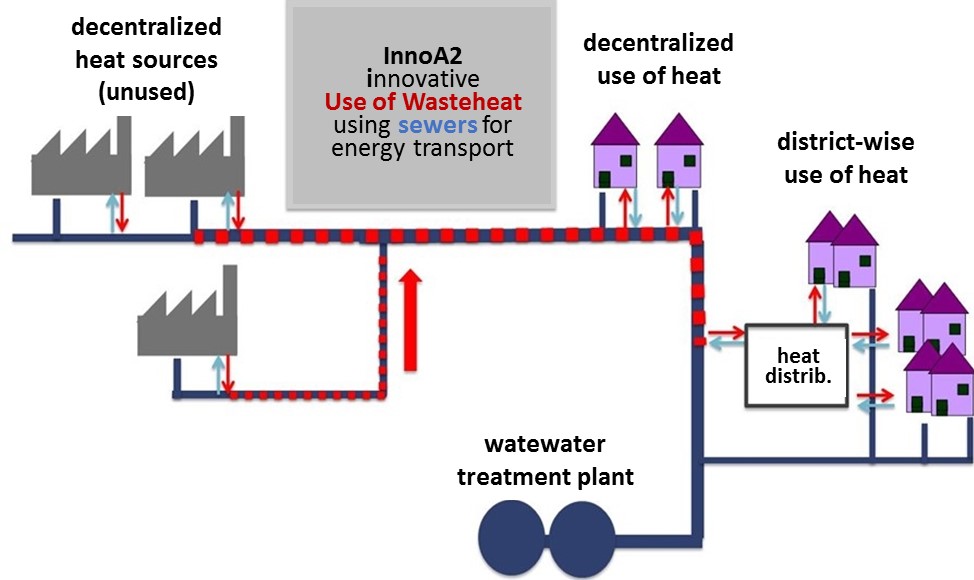InnoA2_up: Innovative Use of Wasteheat using sewers for energy transport
Wastewater - a new energy option?
By use, water becomes wastewater. Whether it is showering, handwashing, washing or cooling processes in trade and industry: In many decentralized places, water is supplied with heat energy, which is discharged into the sewage system without being used or even actively cooled down. Municipal wastewater in the canal has a temperature ranging from 10 to 20 degrees Celsius over the course of the year. This temperature level can be increased by using decentralized heat sources, transported through the sewer and “downstream“ energetically used by heat consumers. The high efficiency of the approach results, on the one hand, from the utilization of waste heat, which would otherwise remain unused (or even actively cooled down), and, on the other hand, from the dual use of the existing sewer infrastructure, which acts as a heat transport pipeline.
